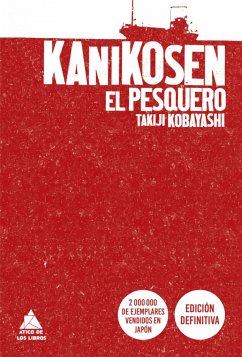The Kanikosen phenomenon arrives "We are going to hell". So begins the story of the Hakko Maru, a fishing boat operating in the icy waters of Kamchatka, in eastern Russia, and its crew: a motley collection of hardened sea dogs ruined by drink and women, university students in debt to the state and poor peasants on the verge of starvation. As the blizzard bites the deck and turns the ships into ghosts, the skipper of the fishing expedition forces the crew to work to exhaustion and mete out brutal punishments if they dare to protest. Gradually, the seed of revolt spreads and, although Imperial Japanese Navy ships patrol the area to maintain order among the fishermen, the inevitable mutiny breaks out. Kanikosen is a classic of Japanese literature. It was first published in 1929 and has now experienced a spectacular revival that has taken it to the bestseller lists in Japan, as modern readers have identified with the unassuming characters in this novel.








